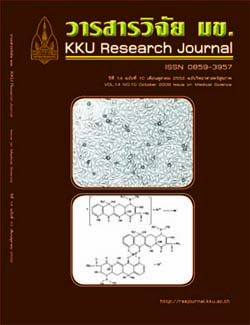Results of the application of hazard analysis and critical control point system (HACCP) for controlling food safety and food cleaning preparation in the cafeteria : a case study of Anuban Changwat Nong Khai school (Thai)
Main Article Content
Abstract
Form the results of the application of hazard analysis and critical control point system (HACCP) in the Anuban Changwat Nong Khai School cafeteria, the study included 10 people who had contact with food, ten samples of food including boiled, fried and a la carte food and 59 samples of utensils. The study findings revealed that those who contacted food increased their own knowledge about controlling food safety and food cleaning. The critical point for food products was the stage of food preparation in the types of boiling, frying and a la carte food. The critical point could be controlled using the method of controlling temperature and time for food preparation to be well cooked at no lower than 70 degrees Celsius for 10-15 minutes in the boiling-type food, and no lower than 70 degrees Celsius for 5 minutes in the fried food and a la carte food. The deviation of product critical control points was not found. However, the deviation of the process critical control points was found. The contaminations of choliform bacteria and total bacteria were decreased.


